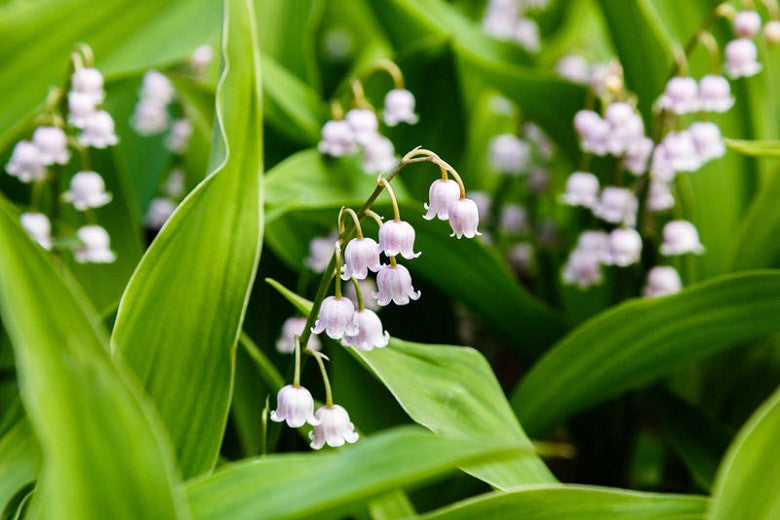A guide to growing Lily of the Valley
Convallaria majalis, or more commonly called "Lily of the Valley" is a low-growing rhizomatous perennial. It forms a lush, spreading groundcover.
Cherished for its sweet perfume, this woodland plant is trouble-free and requires little maintenance.
Blooming for 3 weeks in mid to late spring, up to 5-10 strong sweetly scented, nodding, bell-shaped, pale mauve-pink flowers hang along slightly arching flowering stems.
Key Lily-of-the-valley details
- Height at maturity: 15-22 cm
- Leaf length: 16.7 in (50 cm)
- Hardiness: Very hardy
- Light: Part to full shade
- Soil: Moist, fertile, rich, and well drained (but tolerates a wide range of soil conditions including clay soil)
- Great for cut flowers
- Deer and rabbit resistant
- Keep away from pets, poisonous if injested
- Suitable for planting: Pots, Borders, Ground cover, Gravel gardens, Wildlife gardens, Cottage gardens
- Plant spacing: 100 plants per m2
- Pruning: No pruning or deadheading is necessary
- Fertilize: It typically doesn’t need any fertilizer unless the soil is very poor
How to plant lily of the valley
Use a rich and well-draining soil. Start by planting one root per 8 centimeter pot in the spring. Once you have put the root in the pot, fill the pot with soil, but leave the shoot above soil.
You may decide to soak the roots in water for half an hour before planting if they look dry.
Water regularly to keep the soil moist until the root has established. Once the weather is better (around May), you can transfer the root either to a larger container or into the ground.
Lily of the Valley looks great when planted around trees.
Although the plant pips tend not to flower the first season, they will naturalize easily and multiply in future seasons.
Lily of the Valley meaning: Did you know?
Lily of the Valley is a symbol of the return of happiness.


